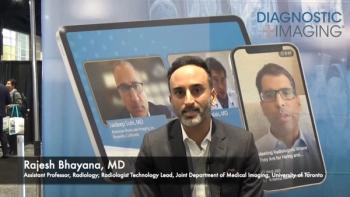
Study Shows Benefits of Reduced Energy Consumption with MRI Devices and Possible Millions in Cost Savings
Researchers suggested that overnight use of a power-save mode on outpatient magnetic resonance imaging (MRI) devices in the United States could reduce annual energy consumption by 76,288.2 megawatt hours (MWh) and add up to $10.7 million in cost savings.
Emerging research suggests that 72 to 91 percent of energy consumption with magnetic resonance imaging (MRI) devices is “non-productive” and that power-saving measures with these devices could result in annual health-care savings of more than $10 million.
These are a couple of the findings from a newly published study in
In the retrospective study, researchers examined energy use, cost, and carbon savings among four outpatient MRI scanners over a 39-day period. Employing power measurement logs, the study authors reviewed data for power-save, scan, prepared-to scan, idle and off modes for the different scanners, according to the study. The researchers noted that one of the MRI scanners was equipped with an Eco-Power mode (Siemens) that cycled the device’s cold head compressor to reduce power consumption and this power-saving mode was simulated with the other MRI devices.
Projected annual energy consumption for the four MRI devices ranged between 82.2 MWh (megawatt hours) and 135.8 MWh but between 72.2 MWh to 124.6 MWh of the energy consumption for the devices was deemed non-productive, according to the study authors. In other words, the researchers found that 72.0 to 90.6 percent of the total projected energy consumption for the MRI systems was non-productive.
“Our study revealed that leaving MRIs in idle mode overnight and weekends results in considerable waste and financial loss,” wrote lead study author Sean A. Woolen, M.D., MSc, an assistant professor of radiology at the University of California-San Francisco School of Medicine, and colleagues. “ … Implementing standard operating procedures to switch to the lowest power mode when not in use and configuring MRIs to go into off mode on a predetermined schedule would facilitate adherence to turning machines off.”
(Editor’s note: For related content, see “
The researchers noted that switching from idle mode to off mode on MRI devices for 12 overnight hours reduced power consumption up to 33 percent, leading to estimated annual savings of up to 21 MWh, 14.9 metric tons of carbon dioxide equivalent (MTCO2eq) and $2,943. Utilizing a power-save mode as opposed to the off mode led to an additional reduction of energy consumption up to 28 percent with the researchers projecting annual energy savings of up to 11.4 MWh and 8.1 MTCO2eq and cost savings up to $1,594, according to Woolen and colleagues.
Projecting estimates for implementation of a power-save mode for ambulatory MRI devices across the United States, the study authors said annual energy savings could range between 58,863.2 to 76,288.2 MWh, translating to an annual health-care cost savings ranging between $8.2 million to $10.7 million.
“Collectively, these results should motivate the broader implementation of energy-reducing clinical operational strategies and further development of innovative technologies to reduce power consumption for scanners when patients are not being scanned,” emphasized Woolen and colleagues.
In regard to study limitations, the researchers acknowledged that model and scanner variations with different MRI devices can alter power consumption. For estimates of energy costs and carbon savings, Woolen and colleagues said they utilized national average data, which may have contributed to over- or underestimations of cost and energy savings.
Newsletter
Stay at the forefront of radiology with the Diagnostic Imaging newsletter, delivering the latest news, clinical insights, and imaging advancements for today’s radiologists.




























